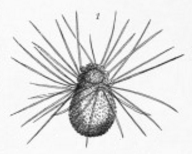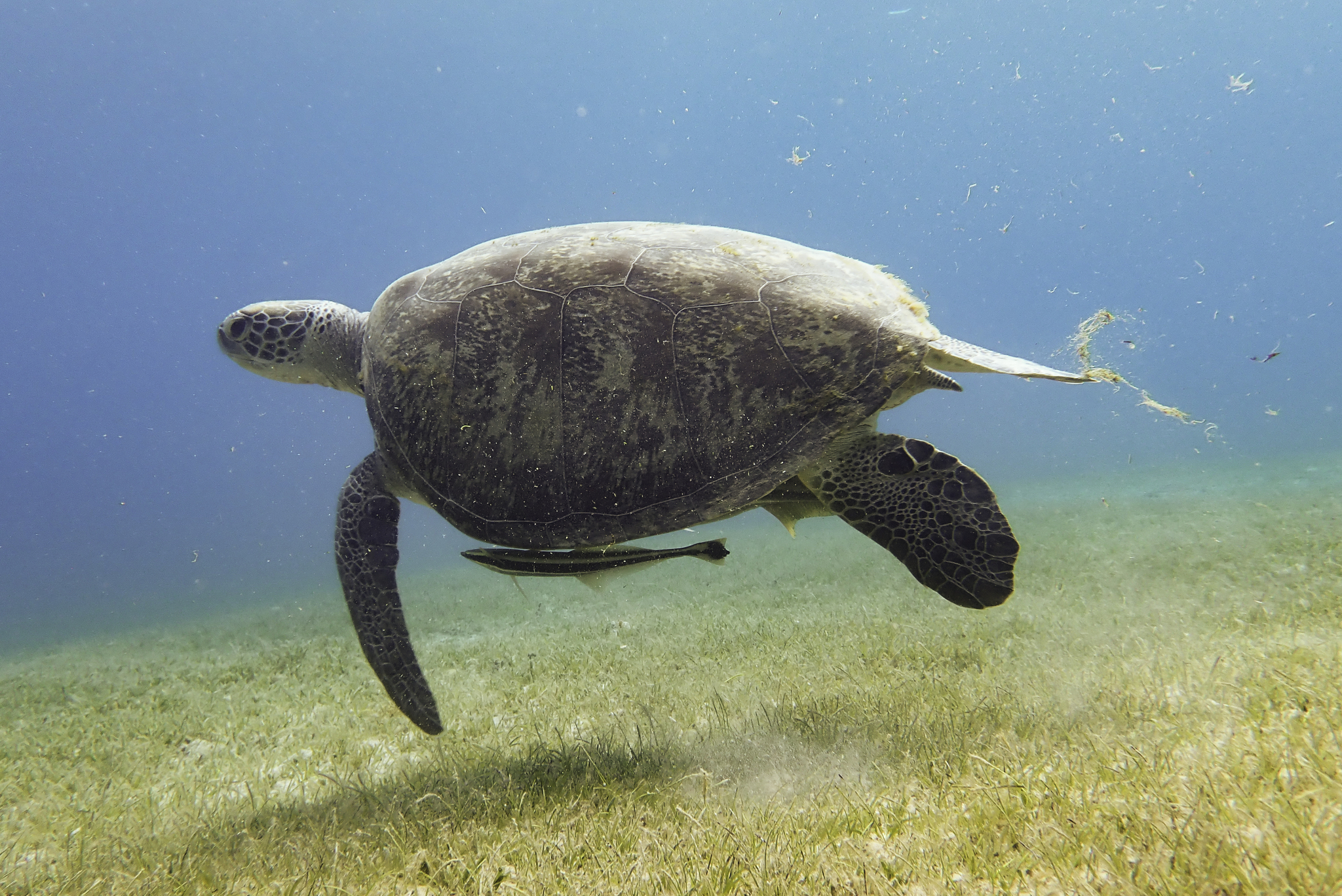|
Trichodinidae
Trichodinidae is a family of ciliates of the order Mobilida, class Oligohymenophorea. Members of the family are ectoparasites (or, alternatively, ectocommensals) of a wide variety of aquatic organisms, including fish, amphibians, hydrozoans, molluscs and crustaceans. Genera The family consists of four genera Genus (; : genera ) is a taxonomic rank above species and below family as used in the biological classification of living and fossil organisms as well as viruses. In binomial nomenclature, the genus name forms the first part of the binomial s .... * '' Dipartiella'' Stein, 1961 * '' Paratrichodina'' Lom, 1963 * '' Trichodina'' Ehrenberg, 1830 * '' Trichodinella'' Srámek-Husek, 1953 References * Oligohymenophorea Parasitic alveolates Ciliate families {{ciliate-stub ... [...More Info...] [...Related Items...] OR: [Wikipedia] [Google] [Baidu] |
Dipartiella
''Dipartiella'' is a genus of marine Eukaryotes from the family Trichodinidae Trichodinidae is a family of ciliates of the order Mobilida, class Oligohymenophorea. Members of the family are ectoparasites (or, alternatively, ectocommensals) of a wide variety of aquatic organisms, including fish, amphibians, hydrozoans, .... There are two species, '' Dipartiella Simplex'' and '' Dipartiella Stein'', both of which can be found in edible fish.Kazubski, S.L.Redescription of trichodinid Dipartiella simplex (Raabe, 1959) (Ciliophora: Peritrichida) and remarks on the genus Dipartiella Stein, 19611/ref> References {{Taxonbar, from=Q25362124 Oligohymenophorea Ciliate genera ... [...More Info...] [...Related Items...] OR: [Wikipedia] [Google] [Baidu] |
Mobilida
Mobilida is a group of parasitic or symbiotic peritrich ciliates, comprising more than 280 species. Mobilids live on or within a wide variety of aquatic organisms, including fish, amphibians, molluscs, cnidarians, flatworms and other ciliates, attaching to their host organism by means of an aboral adhesive disk. Some mobilid species are pathogens of wild or farmed fish, causing severe and economically damaging diseases such as trichodinosis. Morphology and Feeding As the name suggests, mobilida cells are mobile, capable of moving about on the body of a host organism, and of swimming between hosts. This sets them apart from the predominantly sessile peritrichs of the order Sessilida, such as Vorticella and Epistylis, which, during the feeding, or vegetative, phase of the life cycle remain attached to submerged surfaces, often by means of a stalk. Like all peritrichs, the mobilids possess a spiral wreathe of cilia running counterclockwise around the oral region (peristome ... [...More Info...] [...Related Items...] OR: [Wikipedia] [Google] [Baidu] |
Trichodina
Trichodina is a genus of ciliate alveolates that is ectocommensal or parasitic on aquatic animals, particularly fish. They are characterised by the presence of a ring of interlocking cytoskeletal denticles, which provide support for the cell and allow for adhesion to surfaces including fish tissue. Taxonomy Trichodinids are members of the peritrichous ciliates, a paraphyletic group within the Oligohymenophorea. Specifically, they are mobiline peritrichs because they are capable of locomotion, as opposed to sessiline peritrichs such as '' Vorticella'' and '' Epistylis'', which adhere to the substrate via a stalk or lorica. There are over 150 species in the genus ''Trichodina''. '' Trichodinella'', '' Tripartiella'', '' Hemitrichodina'', '' Paratrichodina'' and '' Vauchomia'' are similar genera. Morphology Trichodinids are round ciliates that may be disc-shaped or hemispherical. The cytostome (cell mouth) is on the surface that faces away from the host; this is termed ... [...More Info...] [...Related Items...] OR: [Wikipedia] [Google] [Baidu] |
SAR Supergroup
SAR is a highly diverse clade of eukaryotes, often considered a supergroup, that includes stramenopiles (heterokonts), alveolates, and rhizarians. It is a node-based taxon (under the Sar name), including all descendants of the three groups' last common ancestor, and comprises most of the now-rejected Chromalveolata. Their sister group has been found to be telonemids, with which they make up the TSAR clade. Harosa is sometimes used synonymously with TSAR. Etymology The name SAR is an acronym derived from the first letters of its three constituent clades; it has been alternatively spelled RAS. The term Harosa (at the subkingdom level) has also been used, with Stramenopiles replaced by its synonym Heterokonta in this variant of the acronym. History of discovery Before the discovery of the SAR supergroup, stramenopiles and alveolates were classified in the supergroup Chromalveolata alongside haptophytes and cryptomonads, being believed to have acquired plastids th ... [...More Info...] [...Related Items...] OR: [Wikipedia] [Google] [Baidu] |
Intramacronucleata
Intramacronucleata is a subphylum of ciliates. The group is characterized by the manner in which division of the macronucleus is accomplished during Cell division, binary fission of the cell. In ciliates of this subphylum, division of the macronucleus is achieved by the action of microtubules which are assembled ''inside'' the macronucleus itself. This is in contrast to heterotrich ciliates of the subphylum Postciliodesmatophora, in which division of the macronucleus relies on microtubules formed ''outside'' the macronuclear envelope. References * * External links * Intramacronucleata, Ciliate taxa Diaphoretickes subphyla {{Ciliate-stub ... [...More Info...] [...Related Items...] OR: [Wikipedia] [Google] [Baidu] |
Oligohymenophorea
The Oligohymenophorea are a large class of ciliates. There is typically a ventral groove containing the mouth and distinct oral cilia, separate from those of the body. These include a paroral membrane to the right of the mouth and membranelles, usually three in number, to its left. The cytopharynx is inconspicuous and never forms the complex cyrtos found in similar classes. Body cilia generally arise from monokinetids, with dikinetids occurring in limited distribution over part of the body. Characteristics In most groups the body cilia are uniform and often dense, while the oral cilia are inconspicuous and sometimes reduced, but among the peritrichs almost the opposite is the case. Members are widely distributed, and include many free-living (typically fresh-water, but many marine) and symbiotic forms. Most are microphagous, grazing on smaller organisms swept into the mouth by the cilia, but various other feeding habits occur. In one group, the astomes, the mouth a ... [...More Info...] [...Related Items...] OR: [Wikipedia] [Google] [Baidu] |
Family (biology)
Family (, : ) is one of the eight major hierarchical taxonomic ranks in Linnaean taxonomy. It is classified between order and genus. A family may be divided into subfamilies, which are intermediate ranks between the ranks of family and genus. The official family names are Latin in origin; however, popular names are often used: for example, walnut trees and hickory trees belong to the family Juglandaceae, but that family is commonly referred to as the "walnut family". The delineation of what constitutes a family—or whether a described family should be acknowledged—is established and decided upon by active taxonomists. There are not strict regulations for outlining or acknowledging a family, yet in the realm of plants, these classifications often rely on both the vegetative and reproductive characteristics of plant species. Taxonomists frequently hold varying perspectives on these descriptions, leading to a lack of widespread consensus within the scientific community ... [...More Info...] [...Related Items...] OR: [Wikipedia] [Google] [Baidu] |
Ciliate
The ciliates are a group of alveolates characterized by the presence of hair-like organelles called cilia, which are identical in structure to flagellum, eukaryotic flagella, but are in general shorter and present in much larger numbers, with a different wikt:undulating, undulating pattern than flagella. Cilia occur in all members of the group (although the peculiar Suctoria only have them for part of their biological life cycle, life cycle) and are variously used in swimming, crawling, attachment, feeding, and sensation. Ciliates are an important group of protists, common almost anywhere there is water—in lakes, ponds, oceans, rivers, and soils, including anoxic and oxygen-depleted habitats. About 4,500 unique free-living species have been described, and the potential number of extant species is estimated at 27,000–40,000. Included in this number are many Ectosymbiosis, ectosymbiotic and endosymbiotic species, as well as some Obligate parasite, obligate and Facultative paras ... [...More Info...] [...Related Items...] OR: [Wikipedia] [Google] [Baidu] |
Parasitism
Parasitism is a close relationship between species, where one organism, the parasite, lives (at least some of the time) on or inside another organism, the host, causing it some harm, and is adapted structurally to this way of life. The entomologist E. O. Wilson characterised parasites' way of feeding as "predators that eat prey in units of less than one". Parasites include single-celled protozoans such as the agents of malaria, sleeping sickness, and amoebic dysentery; animals such as hookworms, lice, mosquitoes, and vampire bats; fungi such as honey fungus and the agents of ringworm; and plants such as mistletoe, dodder, and the broomrapes. There are six major parasitic strategies of exploitation of animal hosts, namely parasitic castration, directly transmitted parasitism (by contact), trophicallytransmitted parasitism (by being eaten), vector-transmitted parasitism, parasitoidism, and micropredation. One major axis of classification concerns invasiveness: ... [...More Info...] [...Related Items...] OR: [Wikipedia] [Google] [Baidu] |
Commensalism
Commensalism is a long-term biological interaction (symbiosis) in which members of one species gain benefits while those of the other species neither benefit nor are harmed. This is in contrast with mutualism, in which both organisms benefit from each other; amensalism, where one is harmed while the other is unaffected; and parasitism, where one is harmed and the other benefits. The commensal (the species that benefits from the association) may obtain nutrients, shelter, support, or locomotion from the host species, which is substantially unaffected. The commensal relation is often between a larger host and a smaller commensal; the host organism is unmodified, whereas the commensal species may show great structural adaptation consistent with its habits, as in the remoras that ride attached to sharks and other fishes. Remoras feed on their hosts' fecal matter, while pilot fish feed on the leftovers of their hosts' meals. Numerous birds perch on bodies of large mammal herbivo ... [...More Info...] [...Related Items...] OR: [Wikipedia] [Google] [Baidu] |
Genus
Genus (; : genera ) is a taxonomic rank above species and below family (taxonomy), family as used in the biological classification of extant taxon, living and fossil organisms as well as Virus classification#ICTV classification, viruses. In binomial nomenclature, the genus name forms the first part of the binomial species name for each species within the genus. :E.g. ''Panthera leo'' (lion) and ''Panthera onca'' (jaguar) are two species within the genus ''Panthera''. ''Panthera'' is a genus within the family Felidae. The composition of a genus is determined by taxonomy (biology), taxonomists. The standards for genus classification are not strictly codified, so different authorities often produce different classifications for genera. There are some general practices used, however, including the idea that a newly defined genus should fulfill these three criteria to be descriptively useful: # monophyly – all descendants of an ancestral taxon are grouped together (i.e. Phylogeneti ... [...More Info...] [...Related Items...] OR: [Wikipedia] [Google] [Baidu] |


